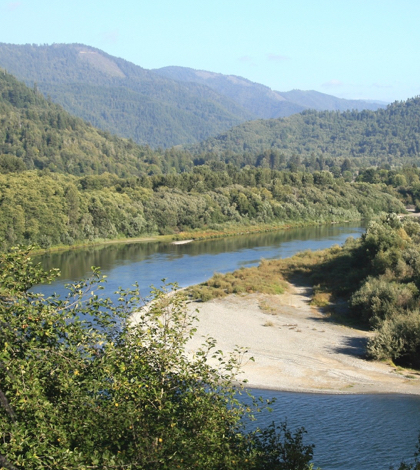The removal of four dams on the Klamath River inched closer to reality this week when Interior Secretary Sally Jewell penned a letter to federal dam regulators in support of a multi-party, two-state agreement to dismantle Copco No. 1 and No. 2 along with Iron Gate and J.C. Boyle dams.
“In short, dam removal can re-write a painful chapter in our history, and it can be done in a manner that protects the many interests in the basin,” Jewell wrote in a letter to the Federal Energy Regulatory Commission (FERC). “The recommendation and determination I am making today are not entered into lightly. Rather, I do so in reliance on the most comprehensive and robust analysis of dam removal ever undertaken.”
Klamath Basin River leaders thought they had overcome years of contention of the basin’s water. An earlier effort in negotiating a comprehensive legislative plan for river restoration, dam removal and water security had been submitted to Congress last year. But, opposition to the plan from House Republicans – from both Oregon and California legislators but especially 1st District California Congressman Doug LaMalfa – allowed the plan to die in Congress without a vote.
But, Klamath Basin leaders –comprised of local tribes, basin irrigators, governments and environmental groups — rewrote the Klamath Hydroelectric Settlement Agreement (KHSA) and submitted the plan to FERC in September. The plan calls for the dismantling the four dams, found within a 30-mile stretch of the Klamath River, by 2020. Removing the dams would open up roughly 420 miles of river tributaries and habitat and usher in the return of what was once the third-largest salmon run on the west coast.
Salmon fishing and consumption was once a mainstay for four Native American tribes along the Klamath River. They had previously relied on the river for its once-abundant salmon for the tribes’ subsistence and cultural lifestyles. Today the annual fall return of the salmon to the Klamath River is down some 90 percent versus its height.
The dams are currently owned by energy company PacifiCorp, a subsidiary of Warren Buffet’s Berkshire Hathaway Energy. The KHSA plan currently calls for the dams to be transferred from Portland-based PacifiCorp to a third-party entity who will assume legal liability. The $292 million dollars to finance the plan would not encumber any federal funds but would, instead, be covered by electricity rate payers and tax dollars from both California and Oregon.
The plan still requires countless steps, including Secretary Jewell’s recent letter, before the Klamath River Basin sees the dismantling of any of the dams. Estimates are that it will take four years before the Klamath becomes the largest dam removal site in the United States.
 California Water News Daily Your Source For Water News in California
California Water News Daily Your Source For Water News in California


